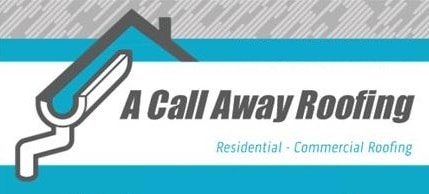Commercial Roof Restoration

We have come a long way in the roof restoration industry; roof restorations have become an affordable and increasingly popular alternative to roof replacement. Although still widely unknown to most commercial property owners and facility managers, it is a better solution in most flat and low-sloped roofs. To inform those who may be unaware of the benefits of fluid-applied commercial roof restoration, the following is intended to serve as an informative and the restoration industry.
What is Roof Restoration?
Commercial Roof restoration is the process of renewing your existing roof to like-new condition using elastomeric roof coatings. Restoring your roof does not typically require removing or replacing any existing material—aside from any small portions of the roof that may be damaged or compromised.
Commercial roof restoration coatings & systems are suited to work on a wide variety of commercial roofing substrates, including Metal, PVC, TPO, EPDM, modified bitumen, built-up roofs, SPF Systems(spray polyurethane foam), and concrete. This fluid-applied commercial roof restoration process is designed to fully encapsulate the roof surface, providing a seamless and flexible roof that is now a reflective and watertight membrane. Roof coatings come in various materials: Acrylic, Butyl, Silicone, Urethane.
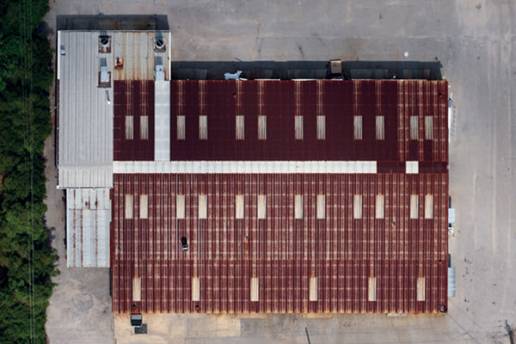
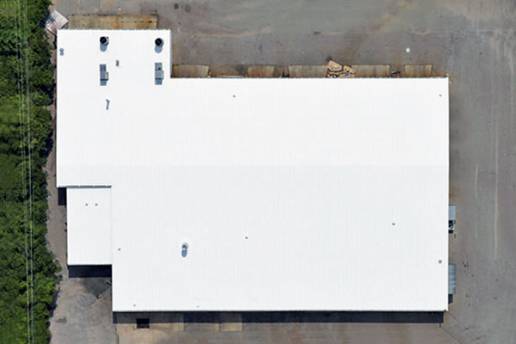
Commercial roof restoration coatings & systems are suited to work on a wide variety of commercial roofing substrates, including Metal, PVC, TPO, EPDM, modified bitumen, built-up roofs, SPF Systems(spray polyurethane foam), and concrete. This fluid-applied commercial roof restoration process is designed to fully encapsulate the roof surface, providing a seamless and flexible roof that is now a reflective and watertight membrane. Roof coatings come in various materials: Acrylic, Butyl, Silicone, Urethane.
“We are an American WeatherStar Approved Contractor”
Think fluid-applied roof restoration is right for your commercial facility? Click here to schedule a free roof inspection.
What Benefits Does Roof Restoration Provide?
Costs Less
Depending on the type of roof, a full replacement can cost anywhere from $5 to $20 per sq. ft. On the other hand, restoring provides all the advantages of a brand new roof but at a fraction of the cost. That’s because restoring a roof requires significantly less labor and material than conventional tear-off and replacement methods. As a result, you can expect to pay 50-70% less.
Extends Service Life
Perhaps the best quality of a restoration system is its ability to prolong roof life. The average commercial roof has a lifespan of about 20-25 years, but with restoration, you can add 10, 15, or even 20 years of serviceable life to your existing roof. If properly installed and maintained, these systems can even be recoated multiple times—meaning you won’t have to worry about replacement anytime soon.
Improves Performance
The coatings that comprise restoration systems are fully developed to adhere to commercial roof surfaces. They provide a protective, monolithic, and watertight membrane that can effectively stop leaks and renew performance. They also significantly reduce the need for constant roof maintenance and repair.
Reduces Energy Costs
Generally speaking, restoration systems have excellent reflective and emissive qualities that can vastly improve the energy efficiency of your facility. Unlike traditional roofing materials, the coatings that makeup restoration systems can reflect 80-90% of the sun’s UV radiation and diminish heat transfer to your building. This can drastically reduce HVAC system workloads and cut interior cooling costs by 20%. Unconditioned spaces will benefit from decreased ambient temperatures, as well.
More Sustainable
In recent years, the demand for more sustainable roofing solutions has grown considerably due to stricter environmental regulations and building codes and a growing concern for the environment. Commercial roof replacements contribute millions of tons of waste to landfills annually. Restoration, however, requires no tear-off and has a minimal impact on the environment.
Less Disruptive
Unlike roof replacement, restoration is far less disruptive to building occupants and takes a fraction of the time to install—minimizing the impact on your day-to-day business operations.
Should You Restore Your Roof?
Ideally, you’ll want to restore your roof well before any problems start to arise. Your roof is slowly degrading day by day, so a proactive approach is always recommended. The earlier in a roof’s lifespan that a restoration system is installed, the more likely it is to perform successfully in the long term.
In any case, the roofing assembly must be structurally sound and free of wet or saturated insulation. For metal roofs, rust and corrosion can be present, but not to the extent where any panels are weakened or structurally unsafe. Meet these criteria, and your roof is likely a candidate to receive a restoration coating system. However, every roofing environment is different, and there are other factors to consider.
Note: To determine if a roof is a candidate to receive a coating system, it is highly recommended that an adhesion test patch be performed.
As an “American WeatherStar Approved Contractor” …. Yes, We Can Perform This Adhesion Test For You.
How Does The Installation Process Work?
1. Surface Preparation
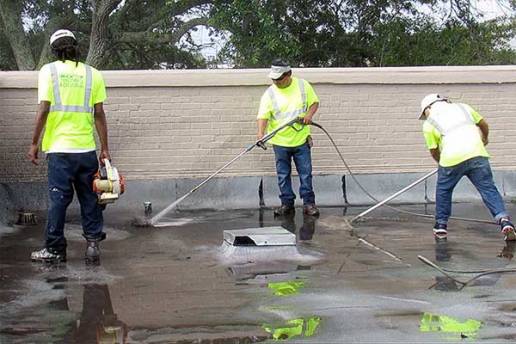

There’s a saying in this industry: “You’re only as good as what you stick to.” That’s why the first and most important step of the installation process is to pressure wash the existing roof to remove any dirt, dust, debris, and other foreign contaminants. This ensures the coating system will fully adhere to the underlying roof membrane. In some cases, a primer may be used to achieve optimal adhesion.
2. Seams & Details

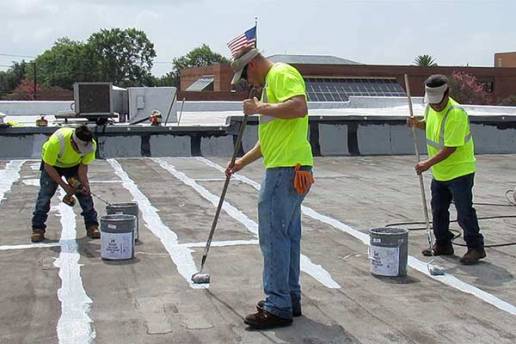
After surface preparation, all seams, transitions, penetrations, fasteners, drains, and other flashing details of the roof are coated with a thick waterproofing mastic. This enables the system to expand and contract (thermal movement) as temperatures fluctuate on the roof surface. It is imperative to address these components beforehand, as they are the most likely spots for leaks to occur.
3. Base Coat Application
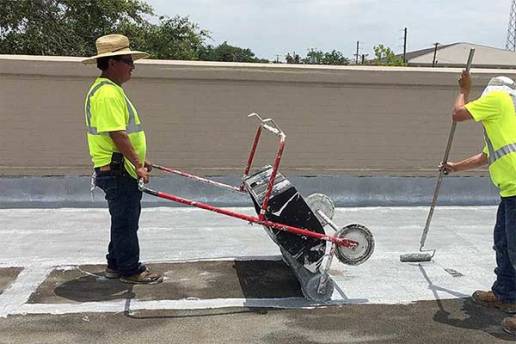
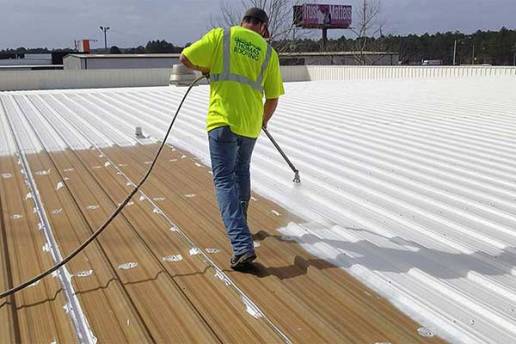
4. Top Coat Application

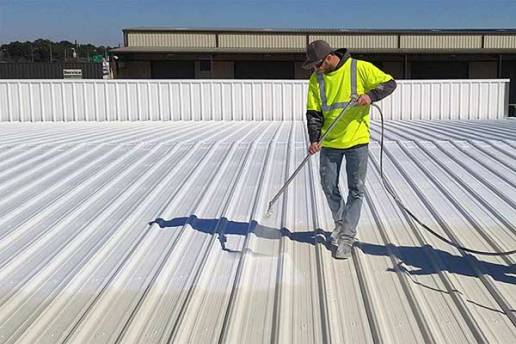
The last step in the process, a top coat application, provides the system with UV stability and moisture protection. Most top coats form a bright-white membrane that provides the optimal amount of reflectivity; however, they can be custom-tinted to various colors.
Note: Regardless of the application method, we use a wet mil gauge to properly measure and maintain proper wet film thickness throughout the installation process.
How Long Does a Restoration System Last?
Generally speaking, most commercial roof restoration systems are warrantied to last anywhere from 10, 15, or 20 years. Beyond that, additional coatings are going to be needed to sustain performance.
As far as the warranty is concerned, the term length of a restoration system is mostly determined by how much material is applied to the roof. For example, our Ure-A-Sil System installed on a modified bitumen roof with a 10-year warranty requires a total dry film thickness of 30 mils, while a 20-year warranty requires a dry film thickness of 40 mils.
Using the specifications outlined above, the Ure-A-Sil System will perform adequately for the term length of the warranty—assuming the system is properly installed and maintained, only used by an Approved Contractor.
Ready to Take the Next Step?
Think fluid-applied roof restoration is right for your commercial facility? Click here to schedule a free roof inspection with an American WeatherStar Approved Contractor.
Commercial Roof Services
Whether you need a Roof Quote or emergency Roof Repair work, we are available to service your roofing needs. We offer affordable roofing services.
People We Work With


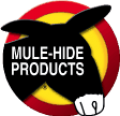



Request A Quote Today
...
Reach Us
Location :
1434 Tramway Rd, Suite 2, Sanford, NC 27332
Email :
acallawayroofing@gmail.com
Phone :
+1-919-578-6505

